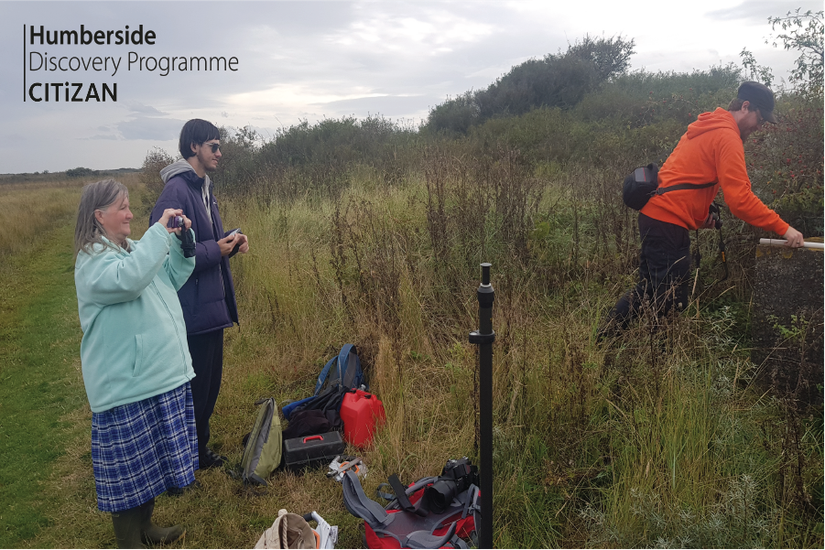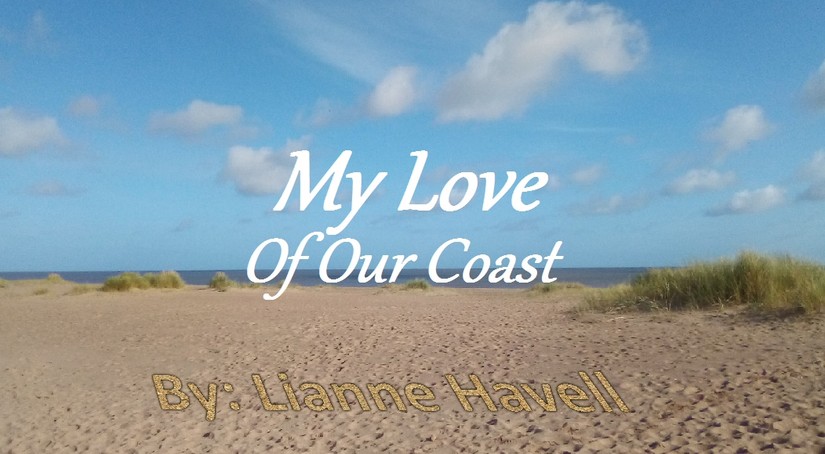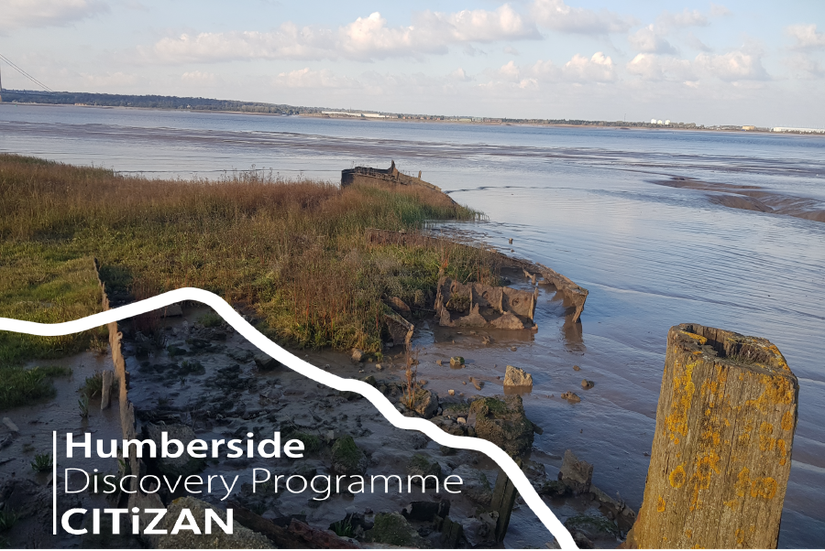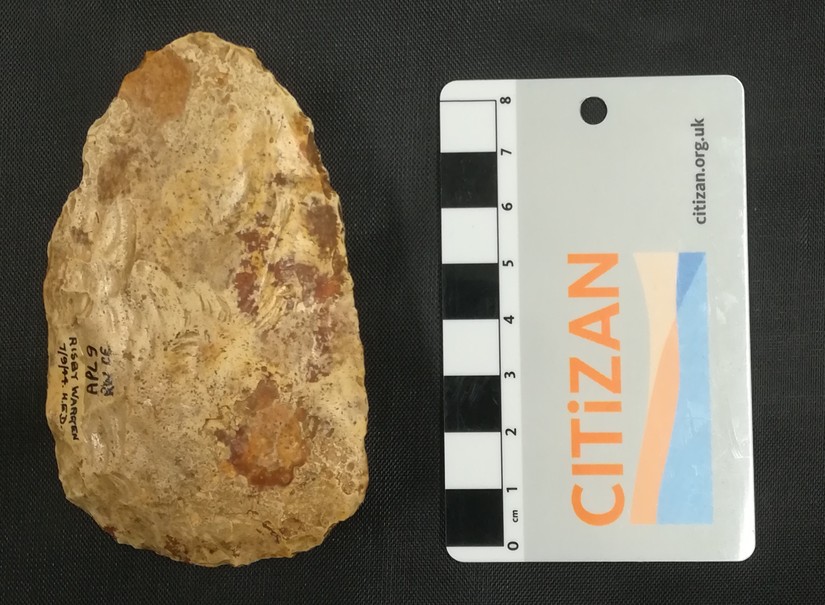Lincolnshire Day 2020
01/10/2020 | S Griffiths
With this year’s Lincolnshire Day being under the cloud of the current global pandemic we thought we’d try to spread a little word about the rich history and archaeology of Lincolnshire. As we’ve had little opportunity to visit and record material in the county this year, we’ve pulled together a few highlights from the past and some future plans. We’ve even got a word from our long-time volunteer, Lianne Havell, direct from the Lincolnshire coast at Sutton-on-Sea.
Rimac, Saltfleetby-Theddlethorpe Nature Reserve

Just after Lincolnshire Day 2019 we visited and recorded Second World War features and history on the Saltfleetby-Theddlethorpe Nature Reserve (October 2019). This involved detailed surveys of Pillboxes along the Rimac foreshore area (see Fig); which are now being written up and published by-ours-truly Chris. You can find out more on the method from a blog Chris wrote-up back in May:
What can we learn from pillboxes? (https://citizan.org.uk/blog/2020/May/29/what-can-we-learn-pillboxes/)
Sutton on Sea
Lianne joined us at Rimac back in October and wrote-up this blog back in February: Volunteering in Sutton on Sea with CITiZAN. She, and fellow volunteer (son) Jordan Havell, have still been busy over the summer. Here is what she had to say:

“It’s been a strange year for everyone this year with this global pandemic even for those of us living by the coast.
At the beginning of the restrictions we were told to stay away from the beach but as life normalised a tiny bit, we were able to take some exercise. For us it meant heading to our wonderful local beach here at Sutton on Sea.
The tide had been fairly gentle and not really much was being washed in.
Once the restrictions had been lifted more the tourists returned and so did the litter amount sadly.
At the beginning of August, we found a large piece of tree. It is thought to be Silver Birch that may have come in from the Lincolnshire Peatshelf. Also, some larger pieces of flint which appears to be of natural content and one piece with a hole in that may have been caused by a marine crustacean.
As the weeks have progressed since the tides are becoming higher and rougher especially in the last few days - mid to late September. I have attached photos of recent finds - coal of various grades 1-4 , iron slag - ballast type material and various pieces of what we think are boat/ship pieces although we have not had any really large pieces brought in yet.
A few small pieces of pottery are also being washed in.”
You can also see more about Lianne’s works from another recent blog post for the Local Trust (https://localtrust.org.uk/news-and-stories/voices-of-big-local/coastal-stories-from-sutton-on-sea/)
Barton upon Humber
We still have plans this month (October 2020) to survey the hulks at Foster’s Wharf, between Barton and Barrow. This has been a long time coming, with tentative plans last summer, then postponed plans back in April. Now, with the current restrictions to indoor gathering(s), we have five ready-to-go volunteers set to record in a few weekends time.
The site has a tantalising history of changing use and function throughout the mid to late 19th C.; eventually settling on a main function of shipping raw clay to Hull. Sometime in the 1950’s trade seems to cease and since then at least two hulks and the remains of the concrete wharf have been left to the mercy of the Humber tides.

Humber Boats
We’ve also been busy discussing the extended history of Humber boats; through their construction, there uses and some related human stories. You can find these blogs through our Humber Discovery page (https://www.citizan.org.uk/discovery-programmes/humberside/) or:
Hero of the Humber (https://www.citizan.org.uk/blog/2020/Jul/31/hero-humber-john-ellerthorpe-east-yorkshire/)
Ferries across the Humber (https://www.citizan.org.uk/blog/2020/Jul/31/ferries-across-humber/)
Boat Building on the Humber (https://www.citizan.org.uk/blog/2020/Apr/09/building-boats-humber/)
The Humber’s Deep Past: a revisit
Earlier last month the HDP picked back-up on some pre-lockdown research into the Pleistocene archaeology of the Humber:
The Humber’s Deep Past (https://www.citizan.org.uk/blog/2020/Jan/17/humbers-deep-past/)
A visit to the North Lincolnshire Museum in Scunthorpe allowed the recording of a series of artefacts from the region that further add to our understanding of this period. Including the relatively well-known, c. 60-40 ky (Thousand Year) old handaxe from Risby Warren; other material could date back as early as 450 ky ago.

Finally, it goes without saying that as soon as we can, we will be back in full swing along the Lincolnshire coastline. If you’ve had interesting experiences while visiting the beach over the lock-down why not let us know?! We’d love to hear about how our coast has allowed you to get outside and enjoy the cultural and natural heritage on offer in the UK.
Keep track of our plans through the website or social media and we hope to see many of you again soon. And don’t forget you can join us as part of Armchair Archaeology; now the weather is turning, and the great outdoors is closing in, you can help us record our coastal history from the comfort of your sofa. Find out more in our blog from back in May:
Armchair Archaeology (https://www.citizan.org.uk/blog/2020/May/01/armchair-archaeology-citizan/)








